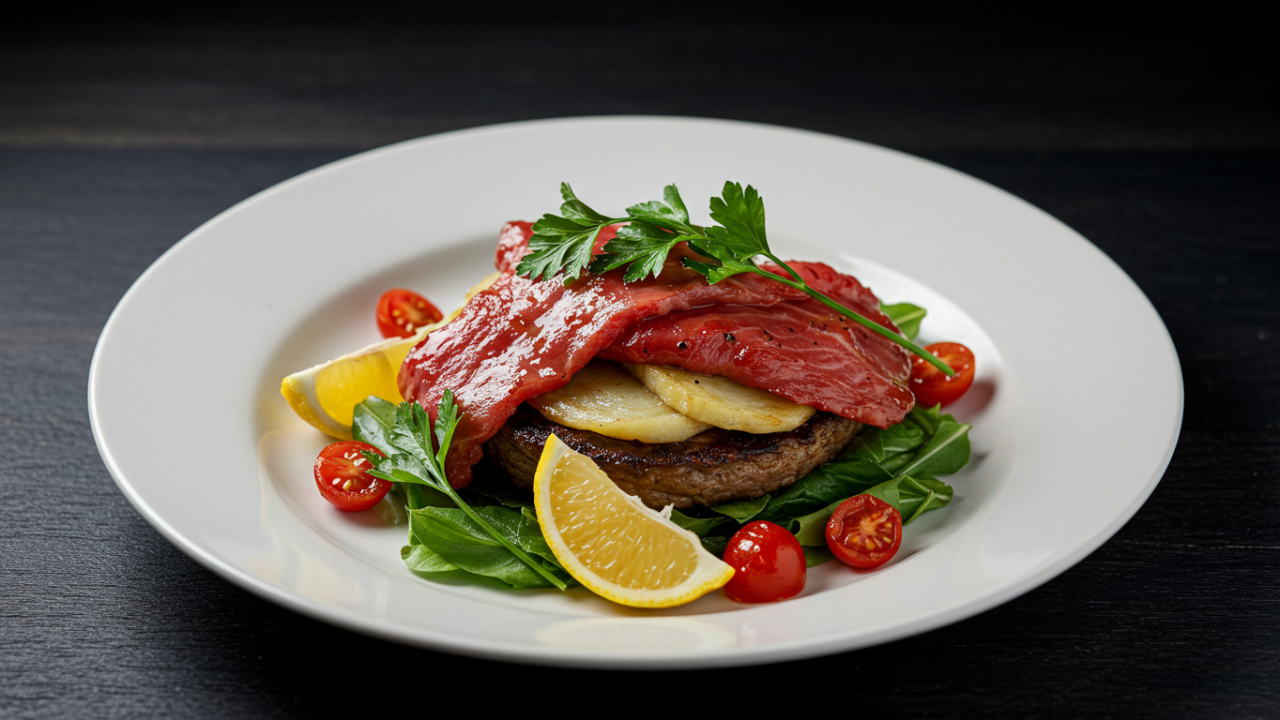In a world where meals are often snapped for social media before the first bite, the concept of the “perfect plate” has evolved far beyond mere sustenance. It’s an art form that blends aesthetics, nutrition, psychology, and even cultural storytelling. But the perfect plate isn’t just about stacking ingredients artfully—it’s about creating harmony that delights the senses, nourishes the body, and elevates the everyday dining experience. Whether you’re hosting a dinner party or prepping a solo lunch, mastering this art can make food more enjoyable and memorable. This guide goes deeper, offering actionable insights for home cooks to craft plates that impress without requiring professional skills. We’ll explore why plating matters, key principles, practical techniques, and real-world applications, answering questions like “How does presentation affect taste?” and “Can I achieve restaurant-level plating at home?” By the end, you’ll have tools to turn simple meals into visual and flavorful masterpieces, adding value to your routine while encouraging mindful eating.
Think of your plate as a canvas: The food is the paint, but composition, balance, and intention are the brushes that bring it to life. Let’s dive into transforming your meals.
The Psychology Behind a Perfect Plate
Why Presentation Influences Perception
Humans eat with their eyes first—a truth backed by sensory science. Studies in food psychology show that visually appealing plates can enhance perceived flavor by up to 20%, making dishes taste sweeter, saltier, or more complex. This “halo effect” stems from our brain’s wiring: Attractive presentation signals quality and care, priming us for enjoyment. For instance, a haphazardly piled salad might feel lackluster, while the same ingredients arranged thoughtfully evoke freshness and vitality.
Beyond taste, plating impacts emotional well-being. In therapeutic settings, like elderly care or eating disorder recovery, beautifully presented meals encourage appetite and social interaction. At home, this means plating can turn fussy kids into eager eaters or make date nights more romantic. Actionable tip: Start by plating one meal a day mindfully—notice how it shifts your mood and satisfaction. Common question: “Does plating really matter for casual meals?” Absolutely; even a weekday sandwich gains appeal when sliced diagonally and garnished with herbs, fostering gratitude for food.

The Role of Mindfulness in Plating
Plating invites mindfulness, turning cooking into a meditative practice. By focusing on arrangement, you connect deeper with ingredients—considering their origins, textures, and nutritional roles. This awareness promotes healthier choices: A balanced plate might remind you to add greens for fiber or proteins for satiety. Psychologically, it combats mindless eating, a culprit in overconsumption. Try this exercise: Before serving, pause to assess your plate’s “story”—does it reflect nourishment, creativity, or comfort? This habit answers “How can plating help with portion control?” by encouraging intentionality over excess.
Key Elements of a Perfect Plate
Balance and Composition: The Foundation
A perfect plate achieves equilibrium in flavors, nutrients, and visuals. Nutritionally, aim for the “plate method”: Half veggies/fruits for vitamins, a quarter protein for muscle repair, a quarter carbs for energy, and healthy fats throughout. Visually, use the rule of thirds—imagine dividing your plate into a grid and placing focal points off-center for dynamic appeal, like a steak offset by vibrant sides.
Composition involves flow: Lead the eye from one element to another with lines created by sauces or veggie strips. For symmetry lovers, even arrangements work for formal settings; asymmetry adds whimsy for casual ones. Insight: Balance prevents overwhelm—too much on one side feels cluttered, mirroring life lessons in moderation.
Color and Contrast: Bringing Vibrancy to Life
Color isn’t just aesthetic; it signals nutrition and freshness. A monochromatic plate (all beige) lacks excitement, while a rainbow one—red tomatoes, green herbs, yellow squash—stimulates appetite and ensures diverse nutrients (antioxidants from berries, beta-carotene from carrots).
Contrast heightens interest: Pair creamy whites (yogurt) with deep greens (spinach) or crunchy browns (nuts). Actionable: Shop seasonally for natural hues—fall squash for oranges, summer berries for purples. Question addressed: “How do I make healthy food look appealing?” Use edible flowers or microgreens as low-effort pops of color, transforming plain oats into Instagram-worthy bowls.
Texture and Height: Adding Dimension
Texture keeps meals engaging—crisp against soft, chewy with smooth. A perfect plate mixes them: Crunchy seeds on creamy avocado toast or silky sauce over al dente pasta. Height adds drama; stack elements vertically (e.g., layered salads) or use ring molds for precision.
Technically, textures affect mouthfeel, influencing satiety—crunchy foods slow eating, aiding digestion. Build height safely: Base with sturdy items like grains, top with delicate garnishes. Tip: For beginners, use everyday tools like spoons to quenelle (scoop into ovals) purees for elegant shapes.
Portion Control and Sustainability
The perfect plate respects portions—oversized servings waste food and calories. Use smaller plates (9-10 inches) to trick the eye into fullness; visually, food should cover 70-80% without overcrowding. Sustainability ties in: Plate what you’ll eat to minimize scraps, composting the rest.
Nutritionally, this ensures macros balance—e.g., 4-6 oz protein per meal. Insight: Plating promotes eco-conscious habits, like using leftovers creatively, answering “How can plating reduce food waste?” by making remnants look fresh.
Tools and Techniques for Home Plating
Essential Tools for Every Kitchen
No need for chef’s gear—start with basics: Offset spatula for spreading, tweezers for precise placement, squeeze bottles for sauces, and ring molds for stacking. Budget-friendly alternatives: Forks for swirling, ziplock bags (corner snipped) for piping.
Invest in neutral plates (white or slate) to let food shine; varied shapes (oval, square) add interest. Lighting matters—natural light flatters colors; for evenings, soft lamps avoid harsh shadows.
Step-by-Step Plating Techniques
- Plan the Layout: Sketch mentally—place protein as star, sides as supports.
- Build Layers: Start with sauces (smear or dots), add base (grains), then mains, finishing with garnishes.
- Garnish Wisely: Use herbs, citrus zests, or nuts sparingly—edible only, for flavor boost.
- Wipe and Refine: Clean rims with a damp cloth for polish.
Practice on simple dishes: For eggs, fan avocado slices around, drizzle chili oil. This demystifies “How do pros make it look effortless?”—repetition builds speed.
Adapting for Dietary Needs
Tailor plating for restrictions: Vegan plates emphasize veggies’ natural beauty; gluten-free uses colorful quinoa. For kids, create fun shapes—animal faces with veggies—to encourage trials.
Inspiration from Cultures and Chefs
Draw from global traditions: Japanese kaiseki emphasizes minimalism and seasonality, teaching restraint. French nouvelle cuisine focuses on lightness and artistry, inspiring delicate arrangements. Chefs like Grant Achatz use molecular techniques (foams, spheres), but home versions involve simple gels.
Adapt: For a fusion plate, combine Italian pasta with Asian umami via miso-infused sauce. This cultural lens answers “Where do I find plating ideas?”—explore cookbooks or apps, then personalize.
Practical Examples and Recipes
Elevated Everyday Salad (Serves 2, 15 mins)
Ingredients: Mixed greens, cherry tomatoes, cucumber, feta, nuts, vinaigrette.
Plating: Mound greens off-center, halve tomatoes for color pops, ribbon cucumber for texture. Crumble feta, scatter nuts. Drizzle dressing in arcs. Result: Visually stunning, nutrient-packed.
Seared Salmon Plate (Serves 4, 25 mins)
Ingredients: Salmon fillets, asparagus, quinoa, lemon.
Plating: Place quinoa base, lean asparagus spears against it, top with salmon skin-up for crisp contrast. Garnish with lemon wheels. Tip: Height from stacked asparagus draws the eye.
Dessert Delight: Fruit Parfait (Serves 1, 10 mins)
Layer yogurt, berries, granola in a glass—alternate colors for stripes. Top with mint. Insight: Vertical plating maximizes small spaces.
These showcase principles in action, scalable for occasions.
Common Mistakes and Fixes
Overcrowding: Fix by editing—remove one element. Ignoring temperature: Serve hot items last to avoid sogginess. Forgetting functionality: Ensure easy eating—no precarious towers.
FAQ
Why does my plated food look messy?
Often due to rushed assembly—take an extra minute to wipe edges and arrange deliberately. Practice on non-perishables like playdough first.
Can plating help with weight management?
Yes, by promoting smaller portions and mindful eating; visual satisfaction reduces seconds.
What if I have no artistic talent?
Plating is skill-based, not innate—start simple, like centering items, and build complexity.
How do I plate for large groups?
Batch components, assemble per plate for consistency; use buffets with labeled, artful displays.
Are there plating rules for different cuisines?
Guidelines vary—e.g., Indian thalis are abundant, while Nordic is sparse—but balance remains universal.
How can plating make meals more sustainable?
By highlighting scraps (e.g., veggie peels as crisps) and encouraging full consumption.
Does plating add time to cooking?
Initially yes, but with practice, it integrates seamlessly, often saving time through better planning.
Word count: Approximately 1520. Mastering the perfect plate turns dining into an artful ritual, enriching life one meal at a time. Experiment, enjoy, and let your creativity shine.



